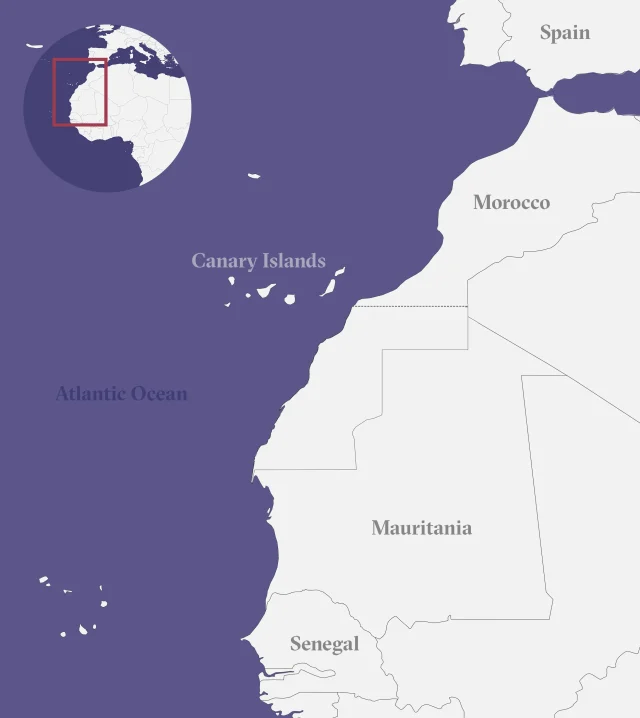
The Canary Islands is one of nine regions called “outermost” in the European Union. On 25 January 2024, the Policy Department for Structural and Cohesion Policies in the European Parliament has published a report on the cohesion policy in the outermost regions that portrays a rather gloomy situation for the Spanish region.
First of all, the Canary Islands shows the worst trend in Gross Domestic Product (GDP) per capita as a percentage of the EU 27 average between 2000 and 2021. This beautiful territory in Spain sees a decrease of more than 30% in those two decades. Such a performance more than triples the second-worst development.
In 2000, the Canary Archipelago was, among the nine outermost regions, the one with the GDP per capital closest to the EU average (97%); after a “staggering decline”, Martinica, Madeira, Azores and Guadeloupe have now surpassed it.
In terms of GDP per capita as a percentage of the respective national average, the trend is unfortunately not better. Out of the nine regions, seven improve their situation between 2001 and 2021. Only the French Guiana and the Canary Islands do not; but the French Guiana loses 5%, while the Canary Islands go down by more than 10%, once again, more than double the second-worst mark.
In view of this scenario, MEP Mr. Jorge Buxadé Villalba has addressed the European Commission, reminding EU authorities that the decline in the Canarian GDP per capita is directly caused by the arrival of 211.000 new immigrants, which accounts for 40% population increase. However, the remaining 60% is unexplained, either by the regional Government or by the European Parliament study. It will therefore be very relevant to know what the European Commission has to say as a reply to the VOX politician.
Moreover, the poor economic evolution of the Canary Islands is in contrast with the EU funding dedicated to the outermost regions for the period 2014-2020. Out of the nine, the Canary Islands received EUR 1841 million, or EUR 817 per capita.
The same situation repeats itself for the period 2021-2027. With EUR 686 per capita of EU funding in regional Cohesion Policy programmes, the Canary Islands receive the least of all.
It is also worth noting that between the two periods, the Canary Islands lose 16% of funding, and that without counting the inflation in the new period. This contrasts with Madeira, which receives a 56% increase in the current period with regards to the previous one.
ECR Party Vice-President Buxadé has also asked the Commission why the per capita assignment of funds to the Canary Islands ranks lowest among all outermost regions, both for the period 2014-2020 as well as 2021-2027.
Finally, the Canary Islands rank worst in cumulated EU payments as of October 2023 as a percentage of the total EU allocation in the regional 2014-2020 Cohesion Policy programmes of the outermost regions, with 35%, 10% less than the second-worst. Mr. Buxadé has asked the European Commission why, out of the EUR 402 millon of the European Social Fund assigned to the Canary Islands during the period 2014-2020, only 35% has been executed.
In conclusion, we may ask ourselves why the EU authorities are treating the Canary Islands so harshly and why Spain’s public authorities in the past decade have not performed more effectively in claiming funds. Furthermore, the decline of its GDP per capita demonstrates a deficient national economic policy.
The study also states that the educational level of the Canary Islands’ population is lower than the national average and that across all educational stages. It shows low completion rates in vocational training and below-average international assessment results in various fields, especially in subjects like foreign languages, and particularly when compared to the OECD average. More crucially, the region’s school dropout rate remains high.
Both from an educational as well as from an economic point of view, the Canarian people deserve better. It seems that the time is ripe for a new political strategy, hopefully with the support of many voters legally residing in both provinces of the Archipelago.
Source of image: The New Humanitarian



 Subscribe
Subscribe